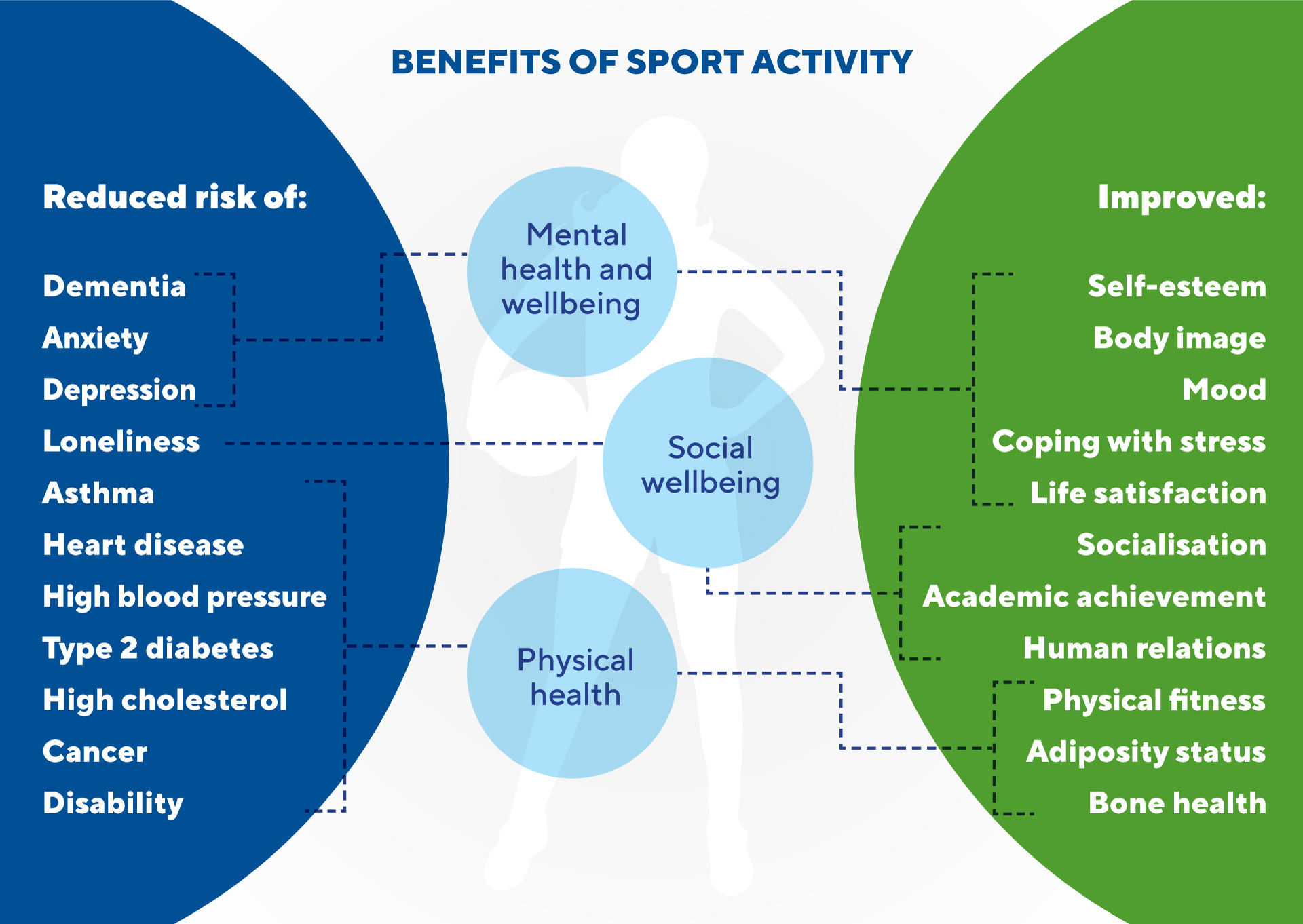Topic 1: UNDERSTAND – How community sport can help
Quick overview from an expert
In this video, 
Actionable learnings from data or existing studies: the multidimensional benefits of exercise and sport
When delivered in a safe environment, engaging in sport and physical activity is proven to come with a wide range of multidimensional benefits encompassing health in its broad sense. The diagram below demonstrates the benefits of sport and physical activity on mental health and wellbeing, social wellbeing, and physical health.
Studies show that engaging in sufficient physical activity reduces the risk of heart disease by 20%, type 2 diabetes by 31%, colon cancer by 19%, breast cancer by 13%, and asthma by 12%. Physical activity also helps prevent high blood pressure, obesity, and high cholesterol and improves physical fitness and bone health.
As for the mental health and wellbeing dimension, studies show that the risk of depression can be reduced by 17%, anxiety by 13%, dementia by 14%, and cognitive decline by 35% by engaging in sufficient physical activity. Physical activity also helps improve self-esteem, body image, sleep quality, the ability to cope with stress, mood, and overall life satisfaction.
Source: Sports Club for Health Textbook

